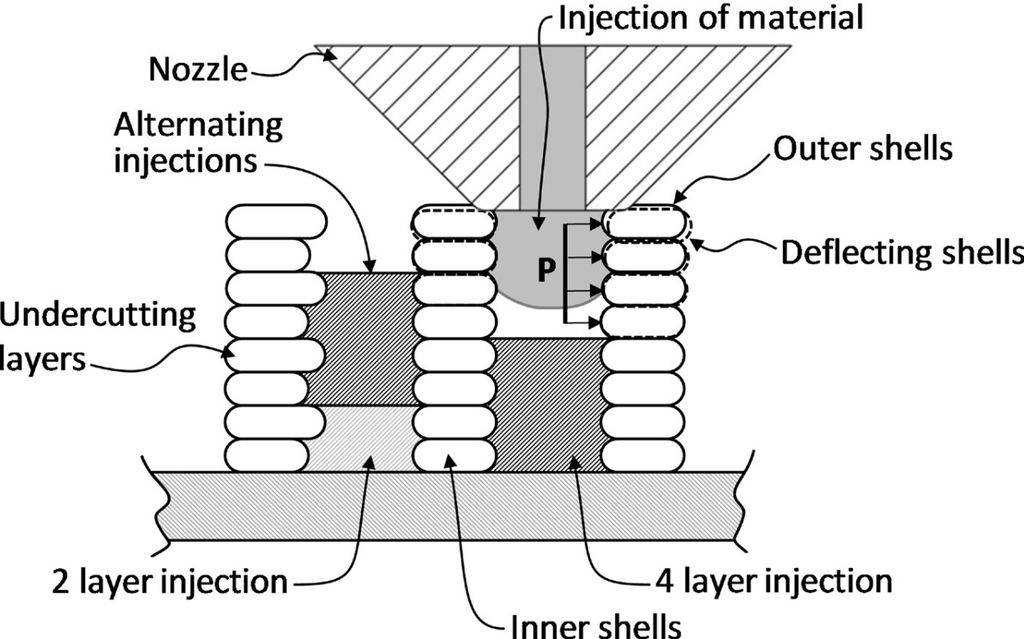Material extrusion or FFF/FDM is a popular process for both prototyping and digital manufacturing, yet it is lacking in terms of part strength, feature resolution, and production rate relative to alternative processes. Researchers at University of Massachusetts are working on Injection printing which claims to addresses these issues by combining material extrusion of the outer surfaces of the part at fine resolution with injection molding of larger interior cavities at high flow rates. Injection printing thus aims to utilize the full melting capacity of material extrusion printers to mitigate the curse of dimensionality that plagues additive manufacturing. Simple governing models for flow in the formed cavities as well as the stress and deflection of the shell walls are presented. To validate the performance of injection printing relative to material extrusion, impact specimens and tensile bars were printed of acrylonitrile butadiene styrene (ABS). The tensile and impact results of the samples were compared, and image analysis was performed on the post-test samples. It was found that injection printing increased print speeds by an average factor of 3.2 relative to conventional material extrusion using the same linear print velocities. With respect to properties, the stiffness, strength, and strain to failure of injection printed tensile bars (in-plane) were respectively increased by 21%, 47%, and 35% compared to material extrusion. Properties of impact specimen and vertically printed tensile bars also showed promising gains albeit with constraints related to the printer’s melting capacity. Even still, injection printing is shown as a broadly applicable and readily accessible process for increasing part strength and production rate while enabling improved feature resolution without greatly extended print times.
Source: Injection Printing: Additive Molding via Shell Material Extrusion and Filling David by O.Kazmer, Austin Colon. Read here



